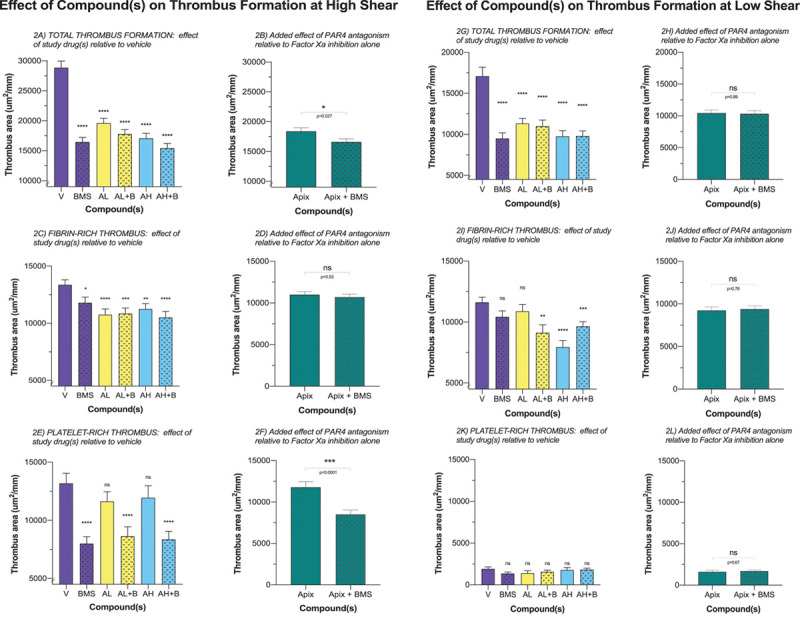Figure 2.

Effect of compound(s) on thrombus formation in the high shear and low shear stress chamber. n=15. A, All drugs reduced total thrombus formation at high shear. B, Overall, the addition of BMS-986141 (BMS/B) to apixaban (Apix) caused a further reduction of total thrombus formation. C, Apix reduced fibrin-rich thrombus formation; BMS had a smaller effect on fibrin-rich thrombus formation. D, The addition of BMS to Apix did not affect the overall reduction in fibrin-rich thrombus formation caused by Apix at high shear. E, Apix at low and high doses had no effect on platelet-rich thrombus formation, whereas BMS markedly reduced platelet-rich thrombus formation. F, The addition of BMS to Apix caused a further reduction of platelet-rich thrombus formation. G, All drugs reduced total thrombus formation at low shear. H, Overall, the addition of BMS to Apix had no effect on total thrombus formation. I, BMS and low-dose Apix had no effect on fibrin-rich thrombus formation, whereas high-dose Apix and the combination of BMS to low- or high-dose Apix led to a reduction in fibrin-rich thrombus area. J, The addition of BMS to Apix did not lead to further reduction in fibrin-rich thrombus area. K, None of the drugs had any effect on platelet-rich thrombus formation. L, The addition of BMS to Apix did have any additional effect on platelet-rich thrombus formation. BMS, 400 ng/mL; AL, 20 ng/mL; AH, 80 ng/mL. Comparisons vs vehicle: ns, P>0.05. AH indicates high-dose apixaban; AL, low-dose apixaban; Apix, low-dose Apix and high-dose Apix; Apix+BMS, low-dose Apix+BMS and high-dose Apix+BMS; ns, nonsignificant; PAR4, protease-activated receptor; and V, vehicle alone. *P<0.05, **P<0.004, ***P<0.0002, ****P<0.0001.
